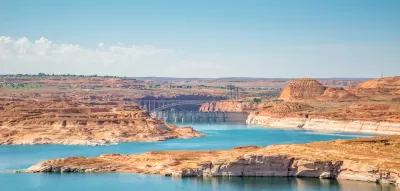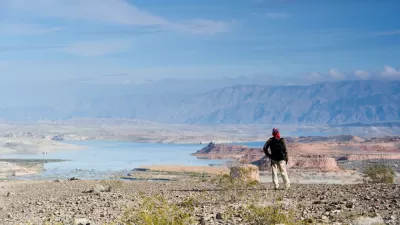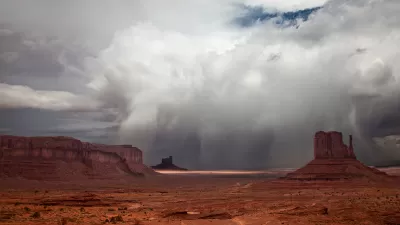The Colorado River Drought Contingency Plan will head to President Trump's desk for an expected signature before heading back to seven states for final ratification.

"Two weeks after water officials told Congress there was urgent need to approve the Colorado River drought contingency plan, the House and Senate both passed a plan Monday and sent it to the president’s desk," reports Andrew Howard.
Congressional approval brings the Drought Contingency Plan (DCP) one critical step closer to final approval, in a "culmination of years of negotiations between the seven states in the Colorado River Basin on how much each state can draw from the river if Lake Powell and Lake Mead drop to crisis levels."
As approved by both houses of Congress, the Colorado River Drought Contingency Plan Authorization Act "[requires] that the Interior secretary authorize the water allocation agreement [pdf] hammered out by Arizona and the six other basin states. That deal is designed to prevent a potential water crisis and settle disputes over who gives up water if the river reaches a crisis level," according to Howard.
Included in that allocation agreement, for instance, is mandatory rationing for Arizona in the event that water levels in Lake Mead fall below a certain point.
As noted by recent Planetizen coverage, the DCP contains serious implications for the Salton Sea in California and the city of Las Vegas as well, in addition to the broader implications for Wyoming, Utah, Colorado, Arizona, New Mexico, Nevada, California, and Mexico.
FULL STORY: House, Senate OK Colorado River drought plan, capping years of debate

Maui's Vacation Rental Debate Turns Ugly
Verbal attacks, misinformation campaigns and fistfights plague a high-stakes debate to convert thousands of vacation rentals into long-term housing.

Planetizen Federal Action Tracker
A weekly monitor of how Trump’s orders and actions are impacting planners and planning in America.

Chicago’s Ghost Rails
Just beneath the surface of the modern city lie the remnants of its expansive early 20th-century streetcar system.

Bend, Oregon Zoning Reforms Prioritize Small-Scale Housing
The city altered its zoning code to allow multi-family housing and eliminated parking mandates citywide.

Amtrak Cutting Jobs, Funding to High-Speed Rail
The agency plans to cut 10 percent of its workforce and has confirmed it will not fund new high-speed rail projects.

LA Denies Basic Services to Unhoused Residents
The city has repeatedly failed to respond to requests for trash pickup at encampment sites, and eliminated a program that provided mobile showers and toilets.
Urban Design for Planners 1: Software Tools
This six-course series explores essential urban design concepts using open source software and equips planners with the tools they need to participate fully in the urban design process.
Planning for Universal Design
Learn the tools for implementing Universal Design in planning regulations.
planning NEXT
Appalachian Highlands Housing Partners
Mpact (founded as Rail~Volution)
City of Camden Redevelopment Agency
City of Astoria
City of Portland
City of Laramie





























